Grass on the cardan - Toyota Land Cruiser, 4.2L, 1997
The topic suggested by a colleague: www.drive2.ru/cars/jeep/w...rnal/4062246863888286291/
The swamp is probably the most vibrant place in the forest. Unlike the dark forest thickets, there is a lot of light here, and unlike forest glades, there is plenty of moisture here. In addition, fertile soil. All these delights make the swamp vegetation a kind of jungle, such stormy islands of life. But I digress.
Jeepers love to ride through this mini-jungle, so to speak, no-man's free oases of wild flora (sometimes fauna, but that's a completely different story).
When you ride on reeds, or fresh green sedge, as well as on numerous other grasses, then besides the aesthetic pleasure of paving your own path, you start to be proud of your jeep, which, in spite of all this natural element, continues to move "in the direction of nothing" .
However, it all ends sometime, and then one of two things: either the swamp has ended, or you have run out of the opportunity to go forward (which most likely happens backward too). But nothing, we came here not to look for easy ways! We have with us the entire arsenal of off-road equipment, as well as the colossal experience of freeing ourselves from such troubles ...
In short, when you still break free from the captivity of nature, from this eerie oasis of wild vegetation, from this, roughly speaking, swamps, and to put it more mildly, from this Gov ... schha !, then you are surprised to find that your own horse is like- it makes a strange noise, but also rustles, and does not accelerate at all.
Here is the time to dismount, lie down on the green grass, not forgetting to take with you your favorite dagger-type knife and see how much of all the joy of the marsh is wound around the gimbal ...
Sometimes, on it you can find a cocoon of such a size that can only fit between the cardan and the bottom of the car. And on elevated machines it can be up to half a meter in diameter. And this "beard", rotating at the speed of the cardan shaft, can do various misfortunes: cut off the brake pipes, blow up the compressor hoses (he especially loves de-airing arbesh blockages), and crawl closer to the shanks of the gearboxes and dry there.
Usually, on pokatushki, jeepers are happy to harvest this crop with huge pleasure, I show each other who has more. But at competitions where you want to get to the finish line as soon as possible, there is not enough time for such a trifle, as always, and ... the results do not forget to show themselves.
In the photo: a piece of reinforced rear locking hose was wound along with the grass
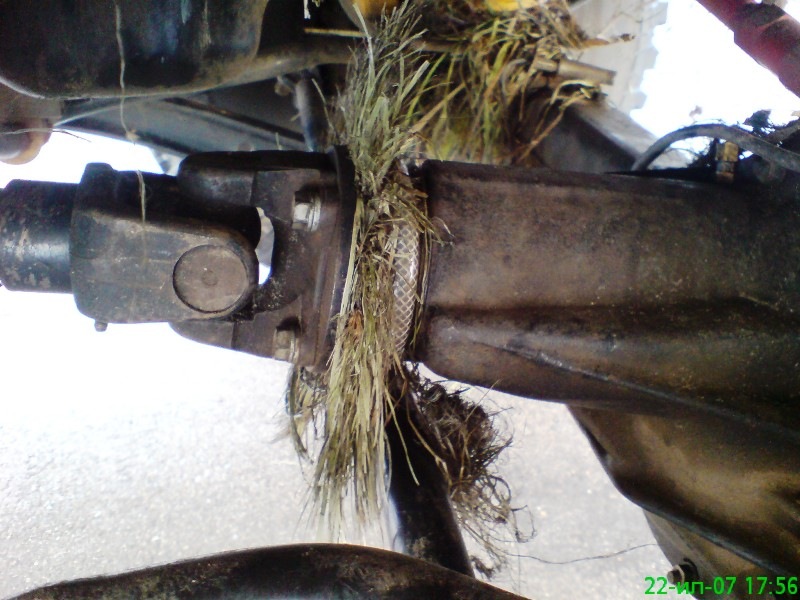

At least a couple of times a season, or even more often, it was necessary to change the oil seals of the rear and front gearboxes. The procedure is not complicated, but it is necessary ahead of schedule.
Plus, it's a pity for the oil! Sometimes, when the oil seal is removed, a compressed carbon-colored substance similar to fiberglass is found. On closer inspection, it turns out to be grass. And the oil in the gearbox begins to receive absolutely unnecessary additives and additives of organic origin ...
He began to fight. The ideas were different: canvas covers for the crosspieces, cover the entire bottom with a sheet, ...
Over time, such a design appeared
The author of the picture is Lenya Dikiy

And we implemented it on my Schoolbus like this:
Rear gearbox: the cage rotates with the cardan
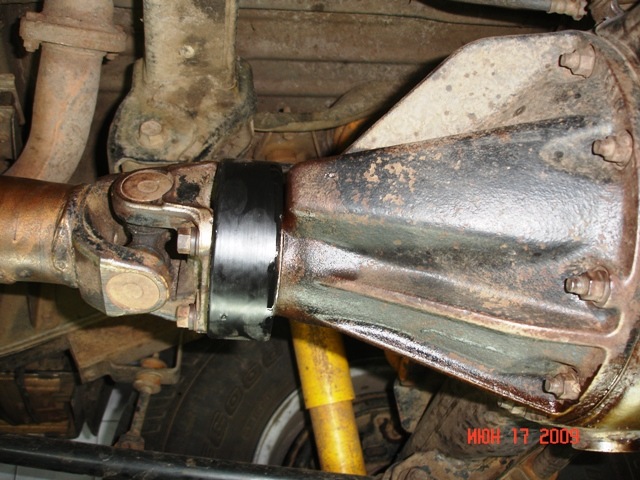
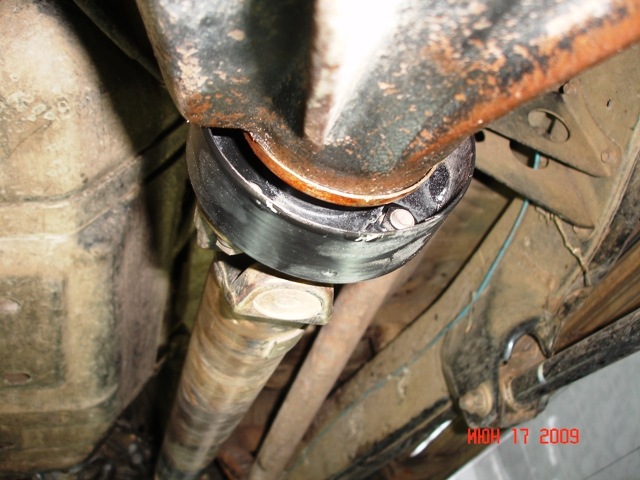
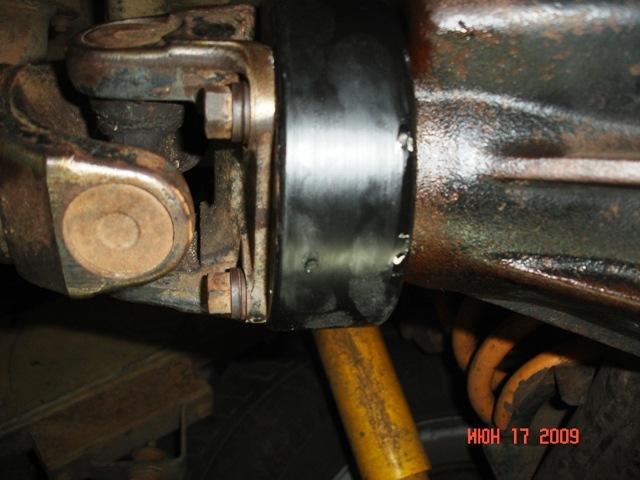
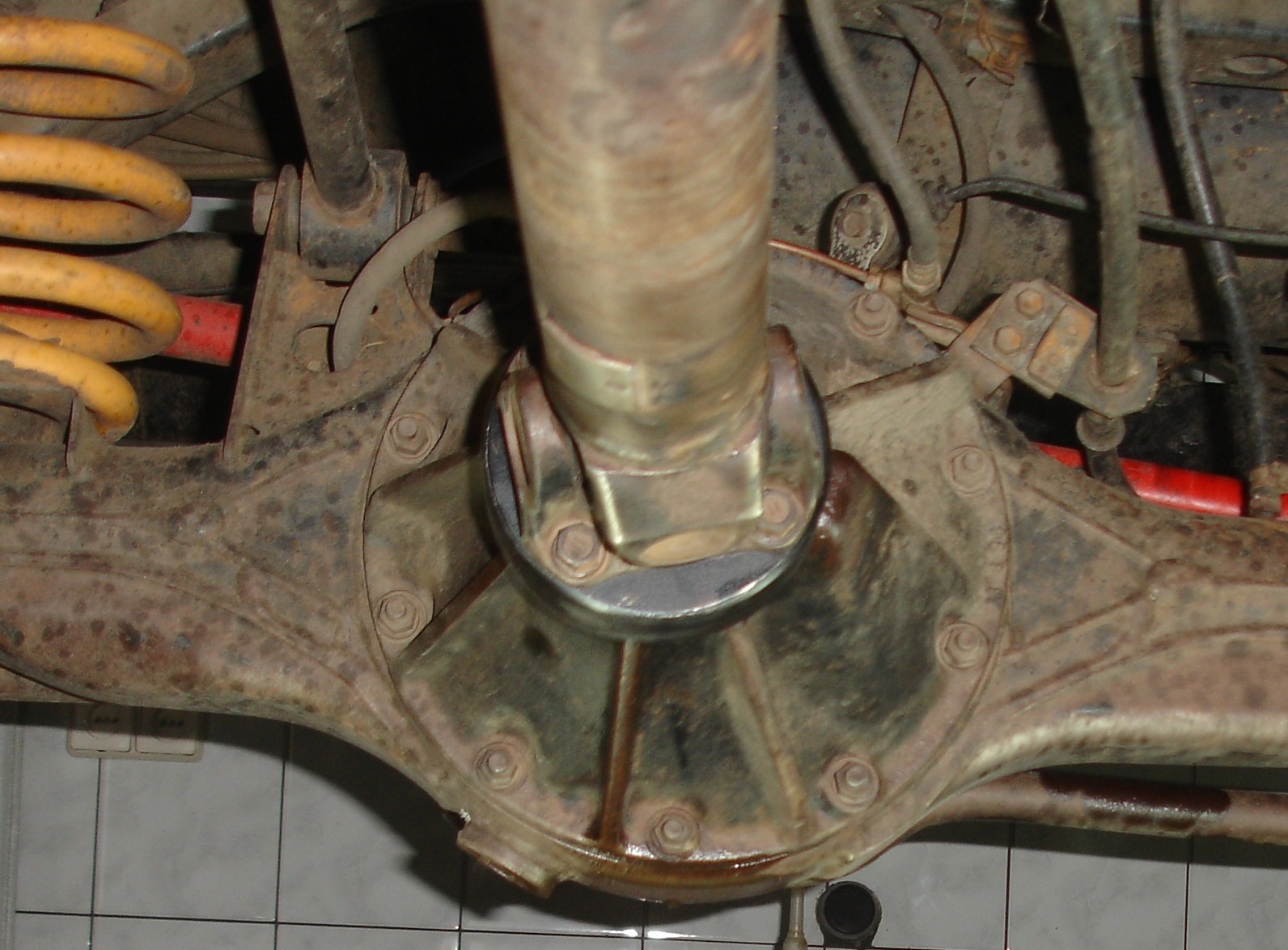
Front gear: the protective ring is stationary
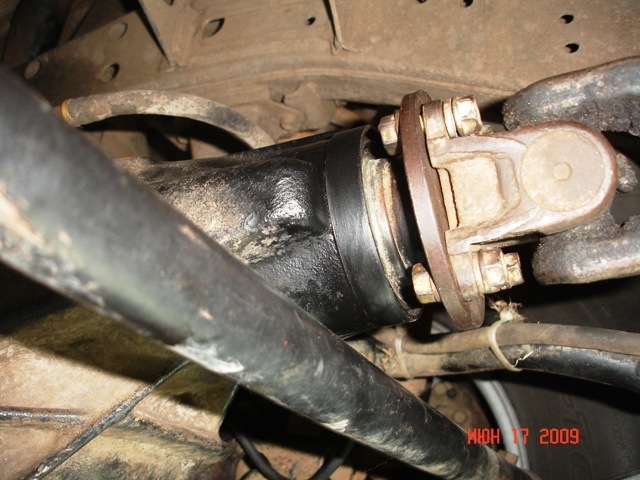
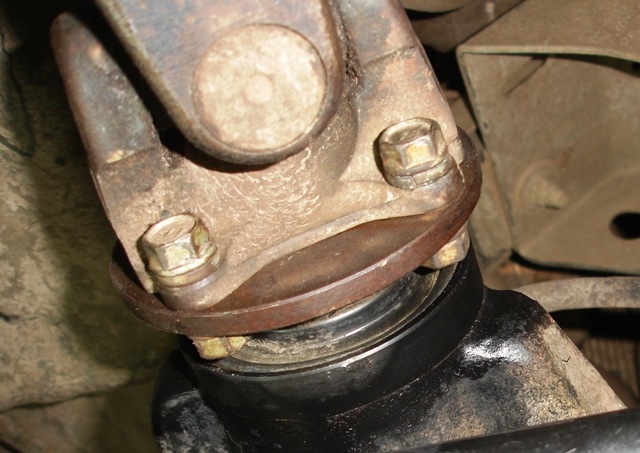

And this is the author of two ways to implement the idea, Ivan (golden hands!) Looks skeptically at the resulting construction:
- Will it reach Kiev?
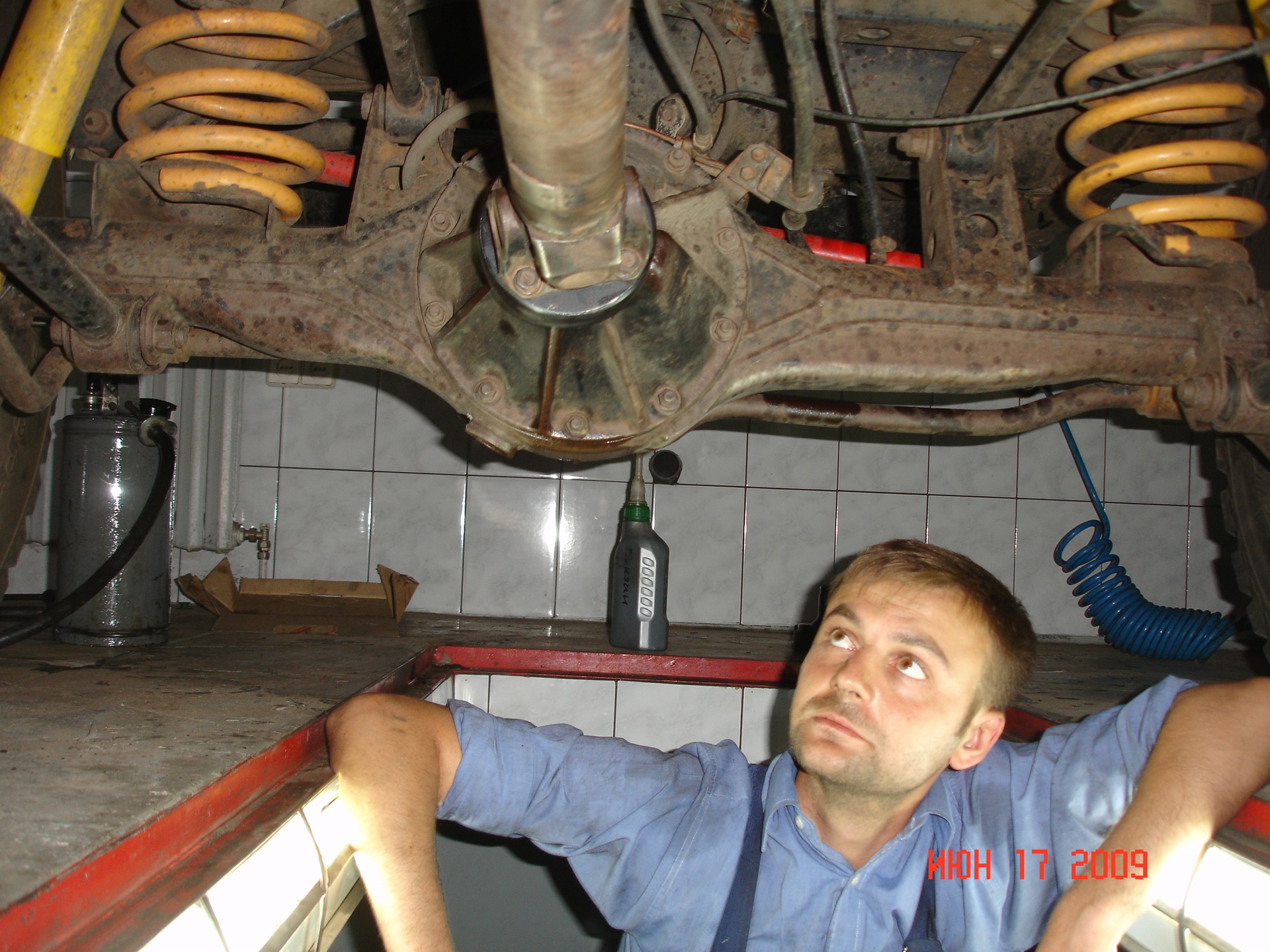
I must say: I have arrived! After a week of ATL trophy with a run through the swamps and back on the asphalt of about 2 thousand km, the front oil seal was completely intact, and the rear one was a little sweaty.
How are you fighting these?
A piece of the gimbal - ideally: it is both thin and light, and even balanced. Now, wherever I see a not quite twisted cardan, I take it just in case
I have crosspieces on the front axles. since we mostly climbed in the slurry, this problem was not identified, but it is clear what will appear as soon as we climb into such a swamp.
realized about the pipe.
In this case, a thin-walled pipe.
And if you ride on the grass, then the same can happen, just when you skid in a swamp lying on your belly, you are guaranteed to get a cocoon on the gimbal. Sometimes it winds up not only reeds, but also branches of bushes. The permeability decreases significantly. On some Americans, the crosspieces are located on the front drive (instead of CV joints) and on the steering shaft - the same thing happens.
do not drive actively through swamps.
but in general the idea is interesting. need to look.
what was the clip made of?
Approximately such a design, for the GAZ 66, works well in principle. But there is a hemisphere, like a cut ball.